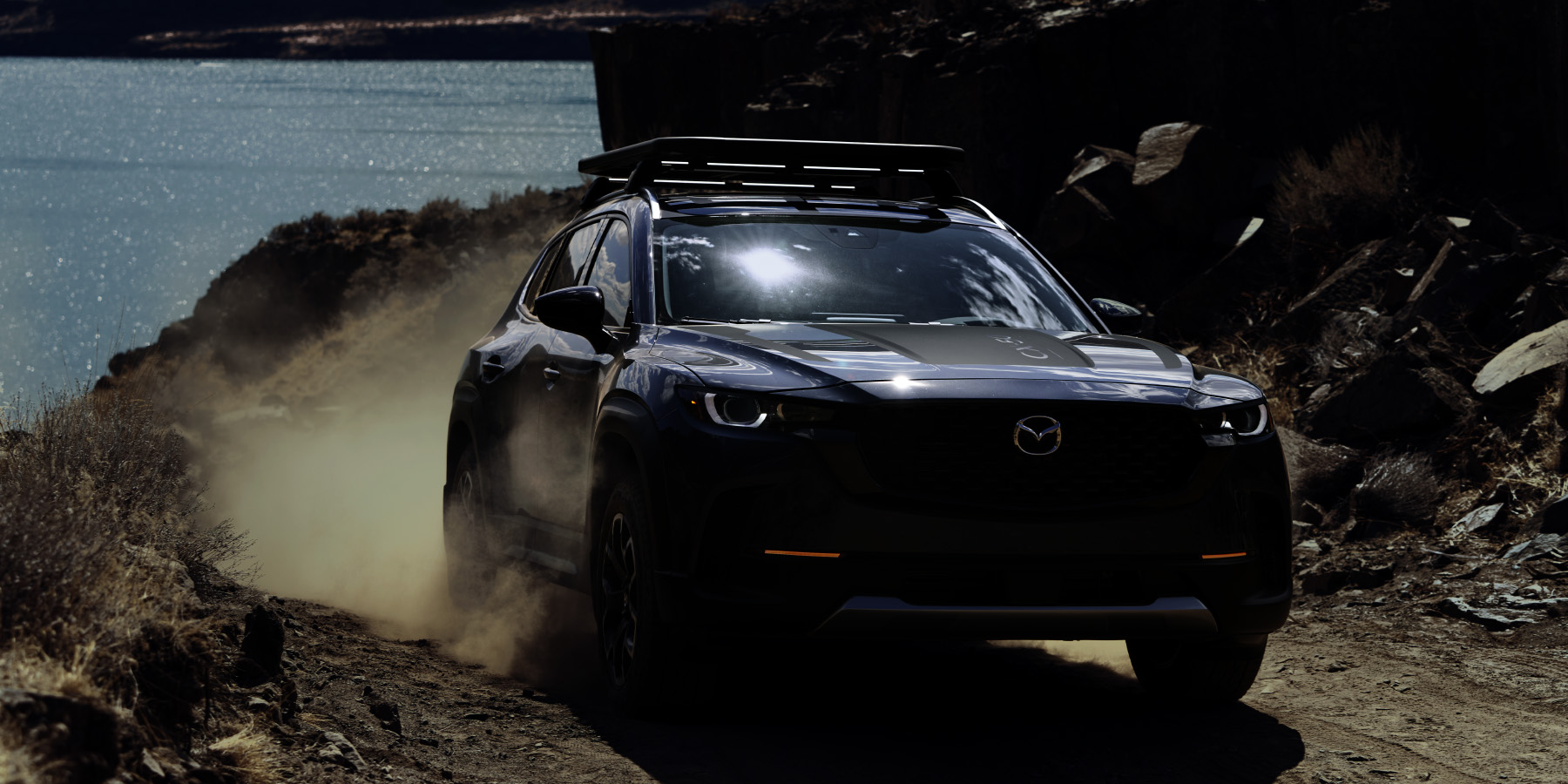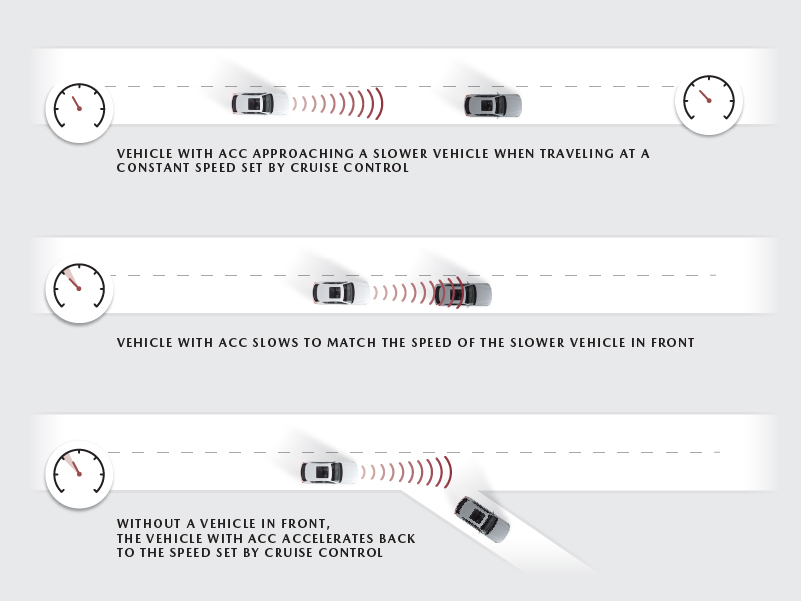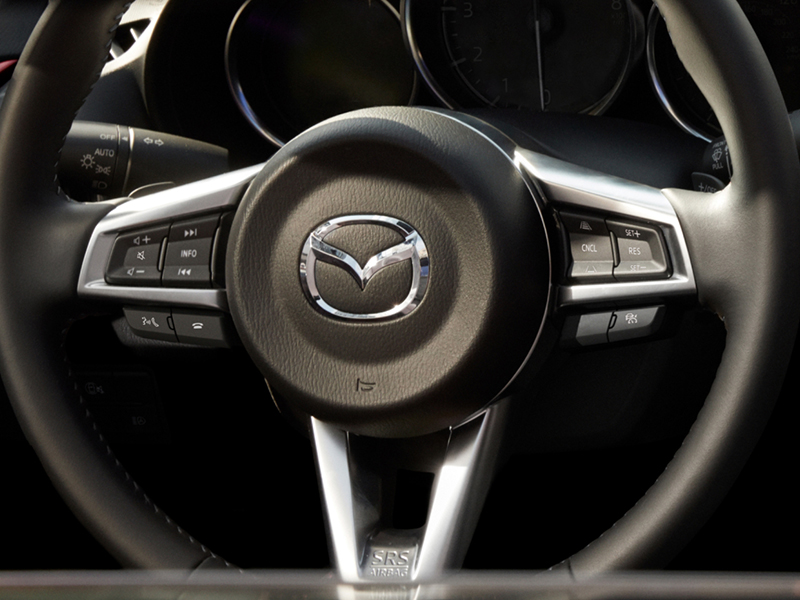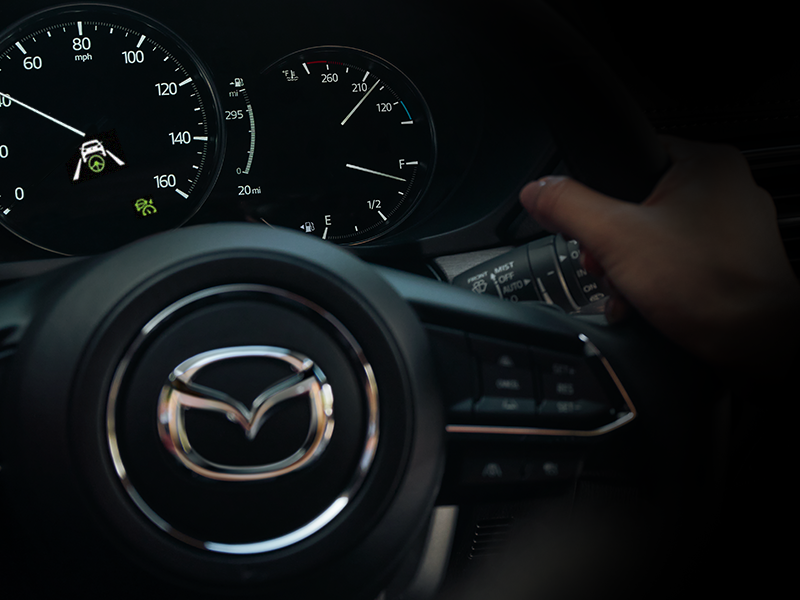What Is Adaptive Cruise Control & Can It Improve Safety on the Road?

How does adaptive cruise control work?
ACC systems keep your vehicle moving at a designated speed while factoring in the distance between your car and the car in front of it. When this distance shortens because the vehicle ahead slows, your vehicle slows as well. If the vehicle ahead slows quickly, stops, or comes from a side street or on-ramp at a much lower speed, ACC warns the driver with a flashing dashboard icon and audible warning, with most vehicle models applying the brakes automatically. Put simply, it’s a smarter version of regular cruise control. As mentioned, the use of ACC does not make a vehicle self-driving. While ACC maintains the vehicle’s speed, it’s still important for drivers to remain alert and focused on the road.
More specifically, once ACC is enabled, the vehicle relies on either radar, cameras, or a combination of these sensors (depending on the model) to gauge the distance and speed of cars in front of it. If there are no cars on the road ahead, your vehicle will continue traveling at the speed you set it to. If your car detects a slower vehicle coming up in your lane, it will reduce speed to match that of the leading vehicle. When the car in front of you leaves your lane — or you change lanes — your ACC-enabled vehicle will accelerate until it reaches the original speed you set.
Keep in mind that as the driver, you can and should “intervene” and brake when necessary. If, say, a vehicle in front of you slows down suddenly and you don’t take action, the ACC system may prompt you to make an evasive maneuver (or, in some models, apply the brakes), but you don’t have to wait for it to do so.
Once you are stopped, you may have to press on the accelerator or press a resume button to begin movement again, as not all ACC systems function to a full stop.

Level 1 vs. level 2 automated driving
SAE International categorizes automated driving into six levels, ranging from momentary warnings (Level 0) to self-driving capabilities without human intervention needed (Level 5). On this spectrum, ACC falls within the first category of systems, in which the driver still controls the vehicle and must constantly monitor these support features, taking action as needed.
ACC is considered a Level 1 feature, which provides either steering or braking support. ACC enters Level 2 territory once it’s combined with lane centering, to offer both sustained lateral and headway control capabilities.
How do you set adaptive cruise control?
For most vehicle models, you can activate your adaptive cruise control system through buttons on your steering wheel, much like you would for conventional cruise control and infotainment options. After ensuring the cruise is enabled, look for a “set” or +/- button; this is where you can set your cruising speed. Alternatively, you may need to press the accelerator until your car naturally reaches the speed you want, then press whichever button is used for your vehicle to activate cruise control.
Now you can set the preferred following distance between your vehicle and any other cars in front of you. Find your “set distance” button (also typically found on the steering wheel) and choose from the various car-to-car distance options: short, medium, or long. You can adjust this setting at any time while your car is in ACC mode.
For more information on how to activate ACC on your specific model, please refer to your vehicle owner's manual.
Advantages of adaptive cruise control
Advantages of using adaptive cruise control include increased safety on the road and less fatigue while driving. A study by the Highway Loss Data Institute (HLDI) showed that, when ACC was coupled with driving assistance features like forward collision warning and Lane Departure Warning System (LDWS), there was a reduction in collisions, property damage, and bodily injury claim rates.
Since ACC adjusts your car’s speed as needed, it can also help optimize your flow in traffic, making for a smoother ride.
However, these advantages come with some caveats. The Insurance Institute for Highway Safety (IIHS) has also stated that the benefits of ACC might be “canceled out” if drivers select a speed that’s over the speed limit and that drivers with ACC systems are indeed prone to speed.
Limitations of adaptive cruise control
Safety technology has its limits. Here are some scenarios where adaptive cruise control may not be as effective:
• Curved Roads: Since forward-facing sensors can only scan directly ahead, they may pick up vehicles in the next lane that enter this visual field while your car is making a turn — and fail to identify vehicles in your lane. At higher speeds, a mild bend on an interstate may cause a vehicle in an adjacent lane ahead to be misconstrued as in your lane. This may result in your vehicle unexpectedly slowing down when it’s not supposed to.
• Hilly Terrain: Similarly, ACC can’t detect vehicles above or below you, which may cause the system to react inappropriately.
• Last-Minute Merges: Cars that start to merge into or out of your lane and come into close proximity to your vehicle can still fall outside the visual range of your ACC system if they are not directly in front of your car. As a result, the system may not alert you or slow down your car in response.
• Heavy Congestion: Many ACC systems work only at certain speeds, say at more than 20 mph or 35 mph, so it may automatically turn off in severely slow traffic. With heavy braking and quick merges in traffic, the system may also struggle to respond appropriately.
• Weather and visibility: ACC sensors may be affected by precipitation, dust, direct sunlight, or darkness and not operate as you expect. Many systems will warn the driver if sensors are obscured or “unavailable”.
As with any safety technology, it’s important to use it correctly and not rely on it exclusively; drivers should always remain alert and be ready to intervene, both proactively and when dangerous situations arise.
The Mazda Radar Cruise Control technology
Mazda Radar Cruise Control with Stop & Go
Some Mazda vehicles, like the CX-5, use the Mazda Radar Cruise Control (MRCC) with Stop & Go functionality. In addition to the features of common adaptive cruise control systems, our MRCC with Stop & Go might automatically:
● Stop your car when the vehicle in front of you stops.
● Maintain this stopped position until the vehicle ahead starts moving again. The Mazda vehicle will maintain its stopped position until given the okay to resume by the driver who presses the accelerator or resume button on the steering wheel to indicate it’s ok to continue.
● Resumes, maintaining the set distance under adaptive cruise control.
Upper trims of the CX-50, CX-70, and CX-90 add a new functionality to MRCC called Speed Limit Assist. In this feature, the resume button can be used to automatically set the cruising speed to the posted speed limit, which is obtained from the vehicle’s Traffic Sign Recognition system.
The system can also trigger a warning sound and visual alert when the vehicle ahead suddenly stops or drastically slows down.
To activate MRCC, simply press the MRCC button on the right spoke of the steering wheel. To set your cruising speed, drive your vehicle to the desired speed, then press the + or RES button. When correctly activated, there will be a car symbol with a small speedometer displayed in green in the instrument cluster or Active Driving Display (if equipped).

Cruising & Traffic Support (CTS)
Cruising & Traffic Support (CTS) is an SAE Level 2 system, available in select new Mazda vehicles. It is an additional driver assistance feature that Mazda owners can use to help reduce driver fatigue. It consists of both headway control and steering assist functions, working to maintain a constant distance between to the vehicle ahead at a preset speed while also keeping the vehicle centered within the lane lines. The driver is still responsible for driving, and must keep their hands on the steering wheel, and eyes of the road at all times.

Note that CTS may not be able to detect a vehicle ahead due to the type or condition of the vehicle, and weather or road conditions, including the inability to decelerate in time if cut off by another vehicle or one stops suddenly. Again, stay attentive to your surroundings and be ready to respond to road conditions.
For more information on advanced safety technology, check out our in-depth guide on safety features to consider when buying a car.
Mazda: Where safety and style meet
The Mazda vehicles are built with safety in mind — without compromising on comfort or luxury. Experience our industry-leading safety technology in our 2024 and 2025 models, including the CX-90, CX-90 PHEV, Mazda3 Sedan, Mazda3 Hatchback, CX-30, and CX-50 (built after August 2023), which have all earned the 2024 IIHS TOP SAFETY PICK+ award for exceptional crash test ratings and safety system performance.
Our Build and Price tool allows you to customize your next Mazda vehicle, or you can simply browse our options online. Take one for a test drive or explore our other vehicles by visiting your local Mazda Dealer today.
This article is intended for general informational purposes only and is based on the latest competitive information available at the time of posting. Information herein is subject to change without notice and without Mazda incurring any obligations. Please review a variety of resources prior to making a purchasing decision. Visit Resource Center for more articles.




















